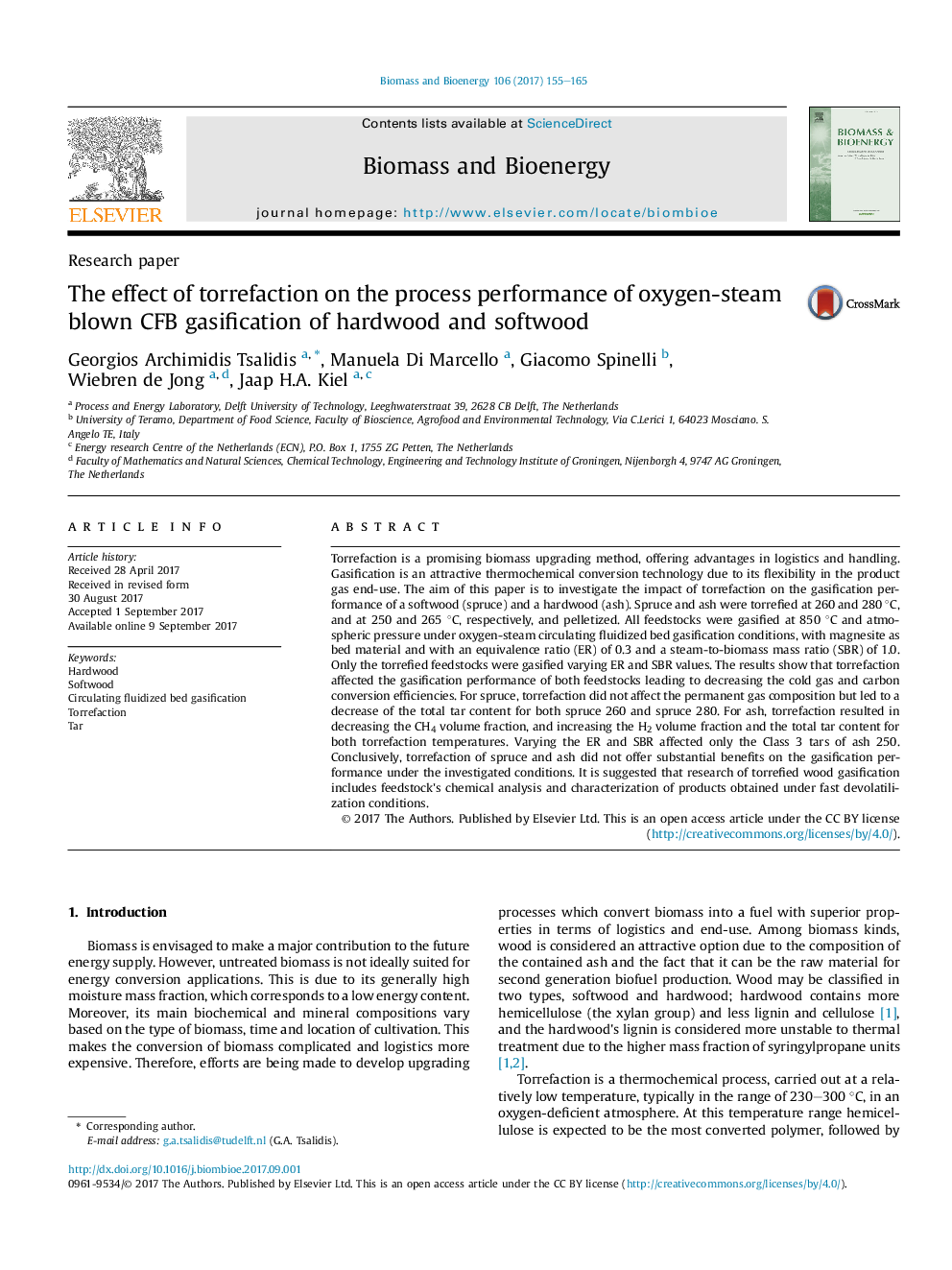| Article ID | Journal | Published Year | Pages | File Type |
|---|---|---|---|---|
| 4996206 | Biomass and Bioenergy | 2017 | 11 Pages |
Abstract
Torrefaction is a promising biomass upgrading method, offering advantages in logistics and handling. Gasification is an attractive thermochemical conversion technology due to its flexibility in the product gas end-use. The aim of this paper is to investigate the impact of torrefaction on the gasification performance of a softwood (spruce) and a hardwood (ash). Spruce and ash were torrefied at 260 and 280 °C, and at 250 and 265 °C, respectively, and pelletized. All feedstocks were gasified at 850 °C and atmospheric pressure under oxygen-steam circulating fluidized bed gasification conditions, with magnesite as bed material and with an equivalence ratio (ER) of 0.3 and a steam-to-biomass mass ratio (SBR) of 1.0. Only the torrefied feedstocks were gasified varying ER and SBR values. The results show that torrefaction affected the gasification performance of both feedstocks leading to decreasing the cold gas and carbon conversion efficiencies. For spruce, torrefaction did not affect the permanent gas composition but led to a decrease of the total tar content for both spruce 260 and spruce 280. For ash, torrefaction resulted in decreasing the CH4 volume fraction, and increasing the H2 volume fraction and the total tar content for both torrefaction temperatures. Varying the ER and SBR affected only the Class 3 tars of ash 250. Conclusively, torrefaction of spruce and ash did not offer substantial benefits on the gasification performance under the investigated conditions. It is suggested that research of torrefied wood gasification includes feedstock's chemical analysis and characterization of products obtained under fast devolatilization conditions.
Keywords
Related Topics
Physical Sciences and Engineering
Chemical Engineering
Process Chemistry and Technology
Authors
Georgios Archimidis Tsalidis, Manuela Di Marcello, Giacomo Spinelli, Wiebren de Jong, Jaap H.A. Kiel,
